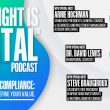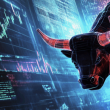Kim Hyland, Head of Global Institutional Relationship Management at MFS, joins MFS' Global Investment Strategist Rob Almeida in this podcast to discuss the four main challenges facing clients and, as investors, how we think about some of those challenges.
Rob Almeida Intro:
Welcome to another edition of the Strategist Corner Podcast. I’m Rob Almeida, MFS’ Global Investment Strategist and Multi-Asset Portfolio Manager. In this episode, I chat with Kim Hyland, head of MFS’ Global Institutional Relationship Management team. We discuss trends and common concerns she’s hearing from clients across the global institutional market and how we as investors think about some of those risks.
Disclosure:
The views expressed are those of the speaker and are subject to change at any time. These views are for informational purposes only and should not be relied upon as a recommendation to purchase any security or as an offer of securities or investment advice. No forecast can be guaranteed. Past performance is no guarantee of future results.
Rob Almeida:
Kim Hyland, welcome to the podcast.
Kim Hyland:
Thanks Rob. It’s good to be here.
Rob Almeida:
So as head of global institutional client relationship, before we get into that, talk a little bit about before you came to MFS, because to me, what’s interesting is, and maybe leading the witness here, but you worked on the sell side and a different perspective. So, talk a little bit about your career coming to MFS.
Kim Hyland:
Okay. So, I was on the sell side for 10 years doing institutional equity sales, so talking to investors like people here at MFS on the global research platform, and then came to the buy side and have been at MFS for 15 years. So, I do consider myself a bit of a newbie in MFS terms.
Rob Almeida:
So, talking to institutional clients for two and a half decades, but more to the present day. What are clients… There’s a lot of concerns, but what are their largest concerns?
Kim Hyland:
Okay. Well, I think first of all, I would say this is one of the most interesting times that we’ve seen in the markets and to be investing through this time. And I think a lot of clients and a lot of investors on our side of the table recognize that the next few decades are going to be very different than the last few decades. And I think 2022 was really that inflection point and an interesting inflection point because you saw it was the first year in 40 years where both equities and bonds as we all know were down. So that was unsettling. But I think there are, I would say, four main issues, I think, that institutional investors think about right now. One, a big one is liquidity. So, addressing liquidity needs with lower total values is a big deal. I think the most public display of that last year was with the UK pension crisis, but they certainly weren’t alone in that regard.
So, liquidity is the first one. And then the second one, probably not surprising to you is the role of fixed income and riskless assets like treasuries are now a competitive asset class. So, what’s the role of fixed income in your overall portfolio? And again, that’s going to be different in the next probably few decades as it was in the last few decades. And then the third one is managing the over allocations to private markets. And I think private markets play a critical role in portfolios, but I think it’s time, given what’s gone on in the markets, it’s time to reassess and remember what’s the premium that you’re going to pay for that illiquidity.
Rob Almeida:
How much of that do you think is a valuation concern or a liquidity concern or it’s just both?
Kim Hyland:
I think it’s both. And I think also looking at bonds, a riskless asset yielding four to 5%. That’s kind of competitive across the board.
Rob Almeida:
And when you think about what public assets did in 2022 and every institutional client is different, but I haven’t seen the type of 2022 marks in private assets. So maybe that’s part of the concern too I would imagine.
Kim Hyland:
And we haven’t seen a lot of the write-downs yet, so . . .
Rob Almeida:
Right. Right.
Kim Hyland:
It will be interesting going forward. And then the last part, and I’m biased here, I work for MFS. I believe in active management, is the role of active management in your portfolio going forward. And if we are in a much more muted return environment, which all things are kind of pointing in that direction, then alpha becomes a much more critical component of your overall total return and enabling you to meet your goals. So, selectivity is key. So, your regional allocation, your sector selection, your style selection, security selection and manager selection are all different ways to generate alpha in your portfolio. So, the role of active management could be very different, and I think it’s something that institutional clients are looking at.
Rob Almeida:
Well, and that makes intuitive sense to me. I mean, just from a mathematical valuation standpoint, rates going from five to zero over the last 10 years, or really just from 15 to zero over the last 25 years, you’re going to get less dispersion and less relevant from regions, sectors, et cetera, because everything inflates when that happens. And then 2022 brought a shock to that. So, rates went from zero to three, four, five, depending upon where you live. Then everything devalued, stocks, bonds . . . yeah, geography, sec, it didn’t matter.
It all get devalued because like you said, cash became a competitive asset. So, what you said makes sense. So that raised liquidity concerns because now maybe you have more illiquid assets than you thought, and that brought up that liquidity issue. And maybe now you’re not getting paid for it like you were four or five, six years ago. And then just the shift in rates up and they don’t have to keep going up. But just at these levels now you’re going to get asset impairment, you’re going to get more volatility, and that’s going to bring increased value to sector allocation, security selection, all those things that you mentioned.
Kim Hyland:
A whole new paradigm out there.
Rob Almeida:
Yeah, that makes sense to me. And that is consistent with what I’m seeing and hearing. So, I don’t talk to nearly as many clients as you do, but I’ve been doing this about the same time as you have. And in my career, across geography, across investor type, retail, institutional, there was always a commonality, right? Because they’re all smart people, but with different mandates, you might be managing a 30-year time horizon, someone else might be managing into a five-year horizon, whatever that might be. But the concerns were directionally the same. And then on the tails, they were different. Someone in South America had different concerns than someone in Europe. For the last year, and I think the causal factor is rates and what happened in ’22, all these client conversations are the same and they’re the same points that you were talking about. So how do I think about fixed income? How do I think about my asset allocation mix? Because it feels different because it is different. And now we’re maybe jumping into what you were referring to of a new paradigm, but things have changed.
Kim Hyland:
Yes. And you and I have spent a lot of the last 15 years on the road meeting with clients, and I think one of the values that you bring as the strategist at MFS is that you’re an investor on our global research platform. You’re interacting with the analyst PMs across the globe, across the capital market structure. So, you’re building your macro perspective through the lens of the micro on our global research platform. So, you’re building that, seeing everything that’s happening from the bottom up to build your perspective, which is different from your peers in the industry, which I always think is an interesting way to look at it.
So given that as the backdrop, I want to turn, I’m going to play the client and say, “Okay, given that as the backdrop, let’s talk about the markets.” And from your perspective, it’s a tough environment out there. You’ve got a hot war with Russia, you have a cold war with China, you’ve got the climate emergency or transition going on. So, there’s a lot that investors have to grapple with. There’s a lot of pressure on costs upward. So, I’m going to put you in the tough position and say, “What is your crystal ball telling you?” And I think this is one of the things that clients say to us. Hard landing, soft landing, no landing? What should we be expecting in 2023 and beyond from your bottom up-viewpoint?
Rob Almeida:
The bad news is on the way here, I dropped my crystal ball and it cracked and broke. So, we’ll have to go with the more simple version. But I think though the emphasis on soft landing, hard landing — because I hear that from clients all the time too, I hear from media that we talk to — and the question makes a ton of sense, and I understand why. I think though that part doesn’t matter as much as people think. I think the pathway for GDP matters at points of extremis. So, you saw a 10% GDP because of stimulus coming out of COVID. And in ’08 you saw minus 10, 20, 30 depend upon where you live. So that’s when it matters. But if it’s 1% GDP or negative 1%, I’m not sure it matters. So, I’m less worried about that. What I’m more worried about is the years of interest rate manipulation.
So, pushing rates below their natural equilibrate. And when that happens, when you do that, mal-investment accrues in the economy. So, people make financial decisions based upon distorted signals. And you’ve seen this throughout history. So, I think just in really, really simple terms, the 40-year move you saw in rates last year changed so many things where now all those, let’s call them maybe suboptimal investment decisions, that decision to start a new product line or that decision to open up into a new geography or to invest in that SPAC or that crypto, all those, let’s call them suboptimal decisions, they get exposed. And so, I think the concern, the investor concern, to me, over the next two, three, four, five, ten years should be centered around the things that we can’t see. So, what type of bad investments was a company making? What kind of impairment do they have to make on the balance sheet?
How much debt did they accrue to make that bad investment decision? And so, when I think about where we are now, valuations are high, and we can debate that because that’s in the eye of the beholder, depends on what you think earnings will be, what cash flows will be. So, we can argue about that. But valuations are above average at the very least. But in addition to that, companies are overrunning, cash flows are too high. And so, I think the investor focus should be, and this gets back to your point about security selection should be, is this asset money good? Stock, bond, public, private US, non-US, what’s going to be the cashflow degenerative power of the enterprise? And how much am I overpaying for that? Or maybe I’m underpaying for that and that’s where I think the focus should be.
So, I have less conviction on soft landing, hard landing, and it matters, but I’m not sure it’s going to matter as much as a company is now refinancing at 8%, their ROI is six, they’re no longer earning their cost to capital. It doesn’t matter recession or not, the companies aren’t going to survive.
Kim Hyland:
Thinking about different companies on the investment platform, where we’re seeing the sort of risks and opportunities where we’ve had this backdrop of declining rates, a lot of fiscal stimulus in the more recent past, quantitative easing, it’s put the world awash in easy money, and it’s created a wonderful beta environment where a rising tide has lifted all boats. I might be stretching it, but all companies were able to get capital all the time. And I think those days are over. So, when you look across our platform, how does this impact individual companies? Where are we seeing the risks and opportunities? I’m guessing where there’s going to be a lot of companies that are going to have to start to roll over their debt pretty soon, and that’s going to change the composition for them and what their balance sheet looks like.
Rob Almeida:
In aggregate, you had a ton of corporate debt issuance over the last 10 years just because interest rates were so low and that capital was intended, or central banks hoped that that capital would be funded into projects, plants, property, equipment, fixed assets to create economic growth, to create jobs, to create money velocity. And that didn’t happen. So, you had the greatest profit cycle, at least in the United States history, and what was the weakest economic growth cycle in 150 years.
Kim Hyland:
We produced nothing.
Rob Almeida:
We produced nothing. So, what happened was instead of capital being put into production, it went into financial gearing. So, you just levered up existing income streams, and that’s why profits are so high, and that’s why the equity market responded so well. And that’s over now. So, with interest rates at 4%, you go from quantitative easing to quantitative tapering or quantitative tightening that changes that dynamic.
So, I think what you start to see, and I don’t know if it’s quickly or slowly, but the companies that are unable to earn their cost of capital will get exposed in that type environment. But the second thing it brings is where there was investment, it was into software to drive brand awareness. They go into apps and social media and marketing and things like that. And I think where we are now, we’ve outgrown our physical world, so we don’t have enough green energy assets. You mentioned earlier hot war with Russia, cold war with China. So, what you’re hearing from companies is they’re worried about their supply chains — and COVID exposed that. How much mother nature risk do they have, how much geopolitical risk they have? And what that spells, I think is a massive shift in onshoring, a massive shift from increasing dividends and buybacks to reducing greenhouse gases, shoring up supply chains, all that requires a tremendous amount of capital.
So maybe going back to your earlier question, what I think the world looks like the next five to 10 years, it’s really different than the last five or 10 years, is instead of capital being used to arbitrage, labor means of production, financial gearing, it’s now being put to productive assets, which makes the world a better place, less greenhouse gas emissions, more labor quality. But that comes at the expense of profit margins. And that’s how we have to think about is that who can earn their cost to capital in that kind of environment and who can’t. And to your point where security selection matters that becomes a big delta, a big delta.
Kim Hyland:
So, we should see a lot of dispersion in the markets?
Rob Almeida:
I think so, yeah.
Kim Hyland:
Within sectors and across.
Rob Almeida:
And the market is brilliant. The market will price it before that becomes tangible. So, as you and I are talking about it now, I don’t know if that happens next quarter or maybe it happens in three years, I don’t know. But as we’ve seen time and time again, markets discount things before they become tangible, before you can see it. And you have to be ready for that beforehand, which goes back to your opening comments about what your clients are telling you, worried about liquidity.
Kim Hyland:
And I got to ask you about the most recent banking crisis. It’d be amiss not to, and I know history doesn’t repeat itself, but sometimes it rhymes. And do you think this could be sort of the beginning of more trouble in the markets, given how you talked about the leverage and financial gearing that we’ve seen over valuations? You could say we’ve had bubble securities, bubble asset classes. So, this is just one episode, but it kind of feels like when you go back to the spring, I think it was the spring of 2007, and you had the collapse of those two Bear Stearns credit hedge funds, and that was really a sign of what was to come. And so, could there be more pain to come as we deal with the excesses in the financial markets right now in the financial system? Do we have systemic issues in front of us? But more importantly, sort of how is our investment team thinking about the banking crisis, and what are they worried about or what opportunities did they see?
Rob Almeida:
Yeah, I think at its simplest form, business cycles don’t die of old age. They die because of a crude mal-investment. Something gets overbought, over produced, whether it’s because of new technology, a war, change in laws, whatever it is. And in the 2000s, too much capital was put into unproductive resources, building too many homes that we didn’t need, and that was financed by large Wall Street banks. And so, the ’08 was a correction of that imbalance. So, you had way too many homes that were built done with a tremendous amount of financial leverage. You didn’t have that in the 2010s. We actually didn’t build enough homes and the homes that we were building, they weren’t used with excessive leverage. So, I think in 2008, you had a solvency problem amongst the banks. This is more of a liquidity problem. So, I think that’s a good news that this is an ’08.
It’s not a systematic housing crisis. I don’t think it’s a systematic banking crisis. However, on the other side, and what you’ve seen is we have a fragmented banking system. We have just excess capacity like we do in a lot of other sectors, I think because of the artificial interest rate environment. So, you have over 4,000 US banks, and of course there’s going to be some that fly too close to the sun as you saw. But I don’t think that’s all of them.
I think what you’re seeing, this is more of a symptom of the overall environment, but how the team is thinking about it — not different than how you think about other events — is this, how does this change the P&L of the individual business? So, what are the risks that we can see? What are the risks that we can’t see? Think about that in your model. And is the market overdiscounting something that it shouldn’t or underdiscounting it? And just walking through each model. But I think the short answer to your question is, I don’t think this is a way. I think we have other problems, but not an ’08 bank crisis.
Kim Hyland:
So that’s probably a good lead up to artificial intelligence and ChatGPT. I think we all sort of futz around with it with our kids and try and learn as much as we can. But just curious how we’re thinking about it again, how to play this from an investment perspective. Do we think there’ll be lots of winners, there’ll be lots of companies that along these lines, or there are going to be just a few that benefit from this whole trend?
Rob Almeida:
Yeah. Well, technology’s a funny thing. And you mentioned earlier, history doesn’t repeat, but it does rhyme. You’ve seen that for 200 years in technology, is that it disintermediates, it usurps an existing technology. And as you’re going up that proverbial S curve, usually what happens is the early disruptors get disrupted along the way. Somebody else comes in, duplicates what they’re doing — they just make it better. And that’s capitalism, that’s efficiencies. So as artificial intelligence grows, it’s difficult, if not impossible to understand who’s going to be the long-term market share winners. And that’s pretty consistent throughout history with technology. So instead, we come at it from the other angle, is that “All right, well, what technology or existing service does artificial intelligence make redundant?” So that’s really the risk. So, when you think 100 years ago, what made the horse and buggy redundant? It was automobiles and what made TV and radio and all these things redundant over time.
And so, I think for the last 20 years, you’ve had significant developments in technology, specifically software, but nothing nearly as revolutionary as I think what we’re seeing now with AI. And so, I’m not a scientist, I’m not a coder, but to me, in simple terms, what this potential new technology allows for is the quick adaption or duplication of coding. So maybe software companies that their economic mode or their value proposition was selling you a code or an algorithm, and now AI perhaps will be able to do that service for you at free or for cheaper cost.
So, it’s thinking about who loses in that future. What’s incredible about it is Moore’s Law, which basically means the semiconductors double every 18 to 24 months. AI data sets are doubling every three months. So, this is growing 600% or six times faster than Moore’s Law. So, this is growing superfast. So, there are beneficiaries to that. You need data centers, co-location, tons of equipment, because the data for AI, it’s literally doubling every three months. So, it seems to us that — I don’t want to use the word clear — but there’s pockets at risk that I think we’ve identified and let’s make sure that we don’t own that. And then there are areas that are, we call them pickaxes and shovels that will service that industry that we have exposure to. That’s pretty exciting.
Kim Hyland:
So, I know we’ve been painting a pretty negative picture of the world these days, but I think some of the things that are going on and that’s deglobalization and onshoring very different than the last 15, 20 years, but there’s a lot of opportunity from a bottom-up perspective to play those trends. Any thoughts that you can share it with us on that front?
Rob Almeida:
When you enter a new paradigm or a new cycle, there’s usually new market leaders. Coming out of the 1990s, which was technology hardware, in the 2000s, of course it was financials and commodities, and then 2010s, it was software. Looking out into 2020s to your point about onshoring and just the increase of making sure supply chains are resilient, but having our own semiconductor capabilities, our own electric vehicle making capabilities, all that sorts of things that requires people, it requires parts, it requires goods, it requires a tremendous amount of capex and opex and capital goods companies, industrial companies are at the epicenter of that. So that seems to be a potential, let’s call it new paradigm market leader or winner. But these were good businesses to begin with or these are businesses we’ve owned for a long time. And maybe this doesn’t happen as quickly as we’re talking about, and maybe it’s more of a… but whether happens slowly or quickly, this is additive to where we’re already good businesses to begin with.
Kim Hyland:
Okay. All right. And I know we’re running up on time, and as we’ve talked about living through regime change, low rates, low inflation, easy access to capital that’s changing into higher rates, higher costs. And so, we think the beta environment is changing. We’re big believers in active management. The S&P 500 was up 7% in the first quarter, yet in this backdrop. So sometimes it feels like the markets are thinking one way versus what’s going on in the economy. I think earnings are projected to be up this year. When do you think we’ll start to see some of the earnings degradation and subsequently some of the dispersion in the markets?
Rob Almeida:
Yeah, that’s always hard. And what’s fascinating to me is aside from equity markets being up, you juxtapose that to what happened in the bond market. So, the drop in the two-year treasury, and that was a 10 sigma event. I mean, I don’t know if it was exactly 10 deviations, but it was something along that line. So, the bond market is telling you something very different, and certainly what the Fed is telling you or what central banks are telling you, which is something very different than what the equity markets are telling you. So, I think there’s a lot of inconsistency, what markets are signaling, and usually equity markets are late in that regard. So, equity markets were discounting a positive earnings outcome all the way through the summer of 2008. And the bond markets were signaling the ’08 banking stress a year before. So, my guess is these things take time because we have a fixed rate economy.
So, companies financed at low rates, they’ve got to pay it back, but they’re paying it back at low rates. And at the same time, they’re dealing with rising labor costs. But as they’re refinancing debt at higher rates — and at the same time end demand for their goods are slowing — that’s going to flow through into the P&L. And for some companies, it’s going to happen very quickly as it happened with a couple of apparel manufacturers late this winter. And for other companies, it’s going to be slower because it depends upon how their debt is structured and what their end markets look like. But that’s an eventuality that’s coming. And the timing of it, I just don’t know. But what I do know is the market will price before it happens. That’s the way it operates. Right? Because you saw that in September of ’08, it was so fast. And I’m not suggesting something of that magnitude, but that’s just the way it works. Usually, the equity market’s caught offsides and then it reacts very, very quickly. But you have to be ready for that before it happens. And we’ve been ready for some time.
Kim Hyland:
And it feels like we’re right in the middle of that going on with the bond market signaling some pain and equity markets with the head in the sand.
Rob Almeida:
And it’s just cognitive dissonance, right? And as increasingly, there’s more evidence of, let’s call it income statement fragility and balance sheet fragility. I just find that incrementally, there’s more people finding reasons to dismiss it. I’m not suggesting those reasons aren’t valid, strong balance sheet households or strong consumer, and they start to point to other things. But I just simply look at the quality of earnings.
So, what always happens as cycles mature is the nominal earnings go up, the quality of earnings goes down. And you saw that into 2018-19. So if you just look at the differential between what companies say they’re earning versus what they’re reporting through generally accepted accounting principles, and there’s always a difference between the two because there are one-off non-cash charges that as a long-term investor you should ignore, right? But as a cycle ages and that mal-investment starts to accrue, it’s well ignore this and ignore that, and oh, ignore these other three one-time, one-off mistakes that we made too. And I looked at it at the end of 2022, and the dispersion was the highest we’ve seen going back to 2007. So, the quality of earnings is poor, and that to me is a symptom of just that mal-investment that’s accrued, and you just need to be thoughtful about that.
Kim Hyland:
We make a good case for active management. So, thank you.
Rob Almeida:
Well, thank you for doing this. I appreciate you being here.
Kim Hyland:
Love to be here. Will come back anytime. Thank you.
Rob Almeida:
I’ll hold you to that.
Kim Hyland:
All right.
Rob Almeida:
The world around us is changing and changing in a material way. Specifically for investors, what will matter most is how this structurally different operating environment is going to affect profit and loss statements. Now, financial markets are going to have to adjust for that. Lower profit margins with lower multiples is something very different from the last two decades. Strategies that may have worked in the past may not be sufficient over the next 10 years. Thank you very much for listening. And for more, please check out the Strategist Corner Podcast on mfs.com or wherever you get your podcasts.
54575.1
MFS Investment Management is the sub-advisor to the Sun Life MFS mutual funds.
Copyright © MFS Investment Management















